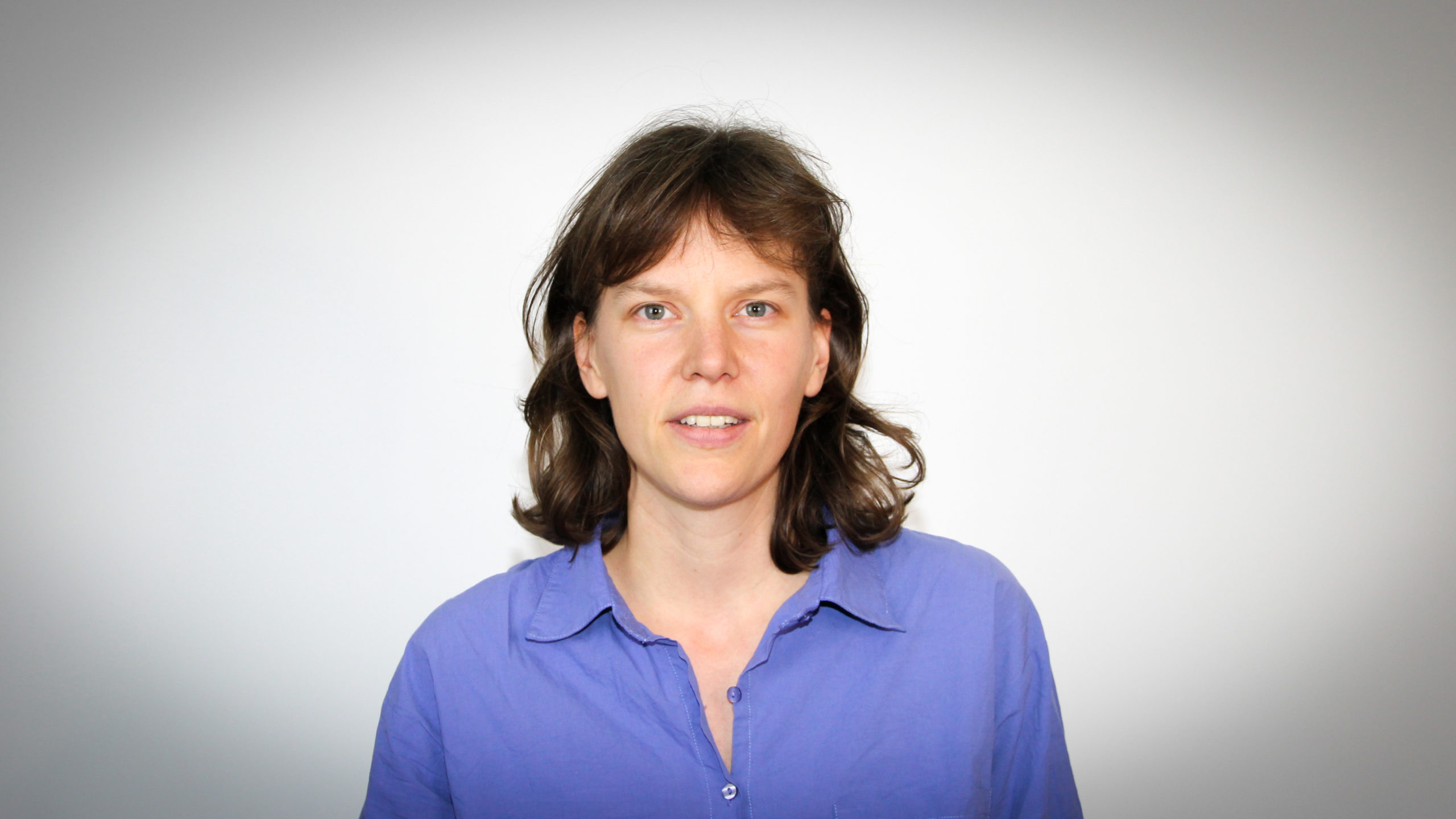Making sense of our connected world

Debunking science myths: Preconceptions about science put to the test
How trusting is society towards science? In general, the picture is positive: according to the Science Barometer 2024, 55% of respondents have trust in research and science. At the same time, there is also mistrust in research results and questions about the independence of researchers. But what is the basis of the most common prejudices that researchers are confronted with in their work? We shed light on five popular myths and misconceptions: from dependence on funders and dealing with mistakes to a constantly quarrelling profession with a political agenda and a chronic lack of reality. Discover how research really works.
Myth 1: Researchers are highly dependent on their funders.
More than half of the respondents to the science barometer stated this assumption as a reason to distrust science. According to the Federal Ministry of Education and Research, the actual amount of funding for research in Germany in 2020 totalled 106.6 billion euros. The EU also has a funding programme worth billions with Horizon Europe.
How do researchers receive funding?
There is a distinction between basic research and applied research. Basic research is free to choose its topics and is mainly financed by public funds. It aims to expand our fundamental knowledge of the world without focussing on immediate practical benefits. In contrast, applied research is aimed at solving specific practical problems or developing certain applications. It is often financed by so-called “third-party funds”. These are awarded in calls for proposals, in which research groups compete for funding that is limited in terms of content and time. When awarding third-party funding, political or economic needs can play a role in determining which research topics are put out to tender. Nonetheless, the freedom of science and thus the free choice of research topics and methods without external influence or pressure is not only enshrined in the German constitution, but is also part of how researchers see themselves. In international comparison, Germany is a country with a high degree of academic freedom.
Myth 2: Researchers are prone to making mistakes.
The claim that researchers often make mistakes is a reason to distrust research for 21% of Science Barometer respondents. Yet, research thrives on mistakes.
Falsifiability as basic principle of natural sciences
In the philosophy of science, Karl Popper describes falsifiability, the possibility that a scientific theory may turn out to be wrong, as a fundamental principle of research. His philosophy of critical rationalism states that theories are only scientific if they can be theoretically refuted. And as long as they are not refuted, assumptions must be tested: Through empirical evidence, surveys and experiments. This understanding applies particularly to the natural sciences. Qualitative social research interprets phenomena with the aim of understanding them comprehensively.
Quality assurance through peer review
For example, when researchers repeat a scientific experiment and get the same results, it is called replication. However, especially in psychology and biomedicine, it is often difficult to replicate the same results. This problem is known as the replication crisis and is a prominent debate within the scientific community about the culture of error. Replication is a criterion for testing the reliability of research results. At the heart of the issue is the question of traceability – in other words, understanding exactly how the results were obtained. These and other questions about methodological quality are primarily asked in the peer review process. This is when other scientists review a scientific paper before it is published to ensure that the new research is reliable. This means that the quality of research is constantly being negotiated and reviewed among researchers themselves.
Myth 3: Researchers disagree.
In fact, scientists contradict each other. Theories and results are always critically discussed and sometimes refuted. This became particularly apparent during the COVID-19 pandemic when new findings led to uncertainty. However, discussing discrepancies is fundamentally important in order to fully understand phenomena.
Climate change: consensus building and media reception
Disagreement is also perceived in debates about climate change. Until the 1990s, there were still researchers who cast doubt on man-made climate change. But by the turn of the millennium, no scientific publication on global warming disputed its man-made cause. Today, climate scientists agree that the main cause of climate change is human activity, with only few sceptical voices coming from other disciplines. So there has long been a consensus within the discipline. But why does this consensus not reach society as a whole? Minority opinions and particularly loud or controversial views often receive a disproportionate amount of media attention. This creates a distorted picture and the impression of disagreement, even though consensus prevails.
Myth 4: Researchers are disconnected from real‑world problems.
The image of science in an ivory tower has been a familiar one since the 1950s and the question of social relevance is still relevant today. Increasingly, not only the finished results, but also the research process itself is being made publicly accessible.
Is it possible to measure the relevance of research?
In the UK, publicly-funded university research projects must describe in an evaluation process how many people will be reached by their results and how important they are for the economy, culture, public services, health, the environment or general quality of life. Other approaches aim to achieve relevance through greater participation, involving lay groups directly in the research process. Assessing the societal relevance of research remains difficult and is highly dependent on the branch of research, which is being considered. Results from macrosociology are used differently than those from microbiology. For example, the discovery and description of a protein may not contribute to the development of a drug until decades later. And a social science study on the polarisation of society, discussed in a newspaper article, may initially spark a discussion.
Myth 5: Researchers act politically motivated.
The accusation that researchers act ideologically is widespread. It often implies that they do not work impartially, but rather pursue a political agenda. This view has political consequences. Under US President Trump, research funding is being cut, employees are being dismissed from science agencies, and protections against political pressure are being dismantled. Socially controversial research areas such as climate research, gender studies, and public health are particularly affected. There are also doubts about the independence of science in Germany. According to the Science Barometer 2024, 34% of respondents believe that researchers adapt their results to their own expectations.
How does the accusation of ‘ideological science’ arise?
When research results contradict one’s worldview, science may appear biased to some people. Studies show: personal interests, fears, conspiracy beliefs, and identity issues lead to the rejection of scientific findings. Researchers are assumed to be biased – mostly based on feelings and out of a protective mechanism. In the context of emotional topics such as identity, morals, or social values, science is then perceived as part of a political programme.
Transparency in science
Naturally, researchers hold their own convictions. However, research follows clear rules, it is testable, comprehensible and open to criticism. This protects against one-sidedness. There is also debate within the scientific community (e.g. Habermas, 1968) about how political and economic interests influence research. It demonstrates the importance of transparency, accountability, and self-reflection for the credibility of scientific research. Science is neither neutral nor political propaganda. The accusation of ideology fails to recognise how research works – and is often itself ideologically motivated.
What’s next?
In general, myths arise when something is inexplicable. The societal prejudices against science presented here are also based on seemingly inexplicable rules of research and a complex scientific research system. However, it is worth looking behind the myths and understanding how research actually works and the important contribution it makes to society. Demystifying research shows that, despite some challenges, the research community has a strong professional ethos with a high degree of self-regulation and quality awareness. By better understanding research and its methods, we can also have informed discussions about its role and importance in our society.
References
Best, V., Decker, F., Fischer, S., & Küppers, A. (2023): Demokratievertrauen in Krisenzeiten. Wie blicken Menschen in Deutschland auf Politik, Institutionen und Gesellschaft?. Friedrich-Ebert-Stiftung. https://library.fes.de/pdf-files/pbud/20287-20230505.pdf
Bundesministerium für Bildung und Forschung. (2024a). Horizont Europa. Deutsches Portal für Horizont Europa. https://www.horizont-europa.de/de/Programm-1710.html
Bundesministerium für Bildung und Forschung. (2024b). Wie wird Forschung finanziert? – BMBF. Bundesministerium für Bildung und Forschung – BMBF. https://www.bmbf.de/bmbf/shareddocs/faq/wie-wird-forschung-finanziert.html
Bundesrepublik Deutschland. (1949). GG – Grundgesetz für die Bundesrepublik Deutschland. https://www.gesetze-im-internet.de/gg/BJNR000010949.html
Deutsche Forschungsgemeinschaft. (2022). Guidelines for Safeguarding Good Research Practice. Code of Conduct. https://doi.org/10.5281/ZENODO.6472827
Fecher, B., Kuper, F., Sokolovska, N., Fenton, A., Hornbostel, S., & Wagner, G. G. (2021). Understanding the Societal Impact of the Social Sciences and Humanities: Remarks on Roles, Challenges, and Expectations. Frontiers in Research Metrics and Analytics, 6, 696804. https://doi.org/10.3389/frma.2021.696804
Friedrich-Alexander-Universität Erlangen-Nürnberg (FAU). (2024). Academic Freedom Index. Academic Freedom Index. https://academic-freedom-index.net/
Galtung, J., Ruge, M. H. (1965). The Structure of Foreign News. The Presentation of the Congo, Cuba and Cyprus Crisis in Four Norwegian Newspapers. In Journal of Peace Research, 2, 64–91. https://www.jstor.org/stable/423011
Hamann, J., & Schubert, J. (2023). 11 Nützliche Forschung: Die Bewertung und Vermessung der gesellschaftlichen Relevanz von Wissenschaft. In D. Kaldewey (Hrsg.), Wissenschaftsforschung (S. 221–236). De Gruyter. https://doi.org/10.1515/9783110713800-011
Habermas, J. (1968). Technik und Wissenschaft als »Ideologie«. Suhrkamp.
Helmholtz-Klima-Initiative. (2024). Behauptung: „Es gibt (noch) keinen wissenschaftlichen Konsens zum Klimawandel“. https://helmholtz-klima.de/klimafakten/behauptung-es-gibt-noch-keinen-wissenschaftlichen-konsens-zum-klimawandel
Hornsey, M. J. (2020). Why Facts Are Not Enough: Understanding and Managing the Motivated Rejection of Science. Current Directions in Psychological Science, 29(6), 583–591. https://doi.org/10.1177/0963721420969364
Ioannidis, J. P. A. (2005). Why Most Published Research Findings Are False. PLoS Medicine, 2(8), e124. https://doi.org/10.1371/journal.pmed.0020124
Jacobs, P. (2025, April 3). Trump administration quashes NIH scientific integrity policy. Science. https://www.science.org/content/article/trump-administration-quashes-nih-scientific-integrity-policy
Parker, J., & Van Teijlingen, E. (2012). The Research Excellence Framework (REF): Assessing the Impact of Social Work Research on Society. Practice, 24(1), 41–52. https://doi.org/10.1080/09503153.2011.647682
Popper, K. (2005). The Logic of Scientific Discovery. Routledge. https://doi.org/10.4324/9780203994627
Reinhart, M. (2012). Soziologie und Epistemologie des Peer Review. Nomos. https://doi.org/10.5771/9783845239415
Reinhart, M. (2016). Reproducibility in the Social Sciences. In H. Atmanspacher & S. Maasen (Hrsg.), Reproducibility: Principles, Problems, Practices, and Prospects (S. 407–423). John Wiley & Sons, Inc. https://doi.org/10.1002/9781118865064.ch19
Rekker, R. (2021). The nature and origins of political polarization over science. Public Understanding of Science, 30(4), 352–368. https://doi.org/10.1177/0963662521989193
Schwaller, F. (2025, March 12). Trump’s ‘assault on science’: Bad for the US, good for EU? Deutsche Welle. https://www.dw.com/en/trumps-assault-on-science-bad-for-the-us-good-for-eu/a-71897988
Uekötter, F. (2019). Kleine Geschichte der Klimadebatte. bpb.de. https://www.bpb.de/shop/zeitschriften/apuz/300412/kleine-geschichte-der-klimadebatte/
Wissenschaft im Dialog. (2024). Wissenschaftsbarometer 2024. Repräsentative Bevölkerungsumfrage zu Wissenschaft und Forschung. https://wissenschaft-im-dialog.de/projekte/wissenschaftsbarometer/#erhebung-2024
This post represents the view of the author and does not necessarily represent the view of the institute itself. For more information about the topics of these articles and associated research projects, please contact info@hiig.de.

You will receive our latest blog articles once a month in a newsletter.
Open higher education
Online echoes: the Tagesschau in Einfacher Sprache
How is the Tagesschau in Einfacher Sprache perceived? This analysis of Reddit comments reveals how the new simplified format news is discussed online.
Opportunities to combat loneliness: How care facilities are connecting neighborhoods
Can digital tools help combat loneliness in old age? Care facilities are rethinking their role as inclusive, connected places in the community.
Unwillingly naked: How deepfake pornography intensifies sexualised violence against women
Deepfake pornography uses AI to create fake nude images without consent, primarily targeting women. Learn how it amplifies inequality and what must change.





